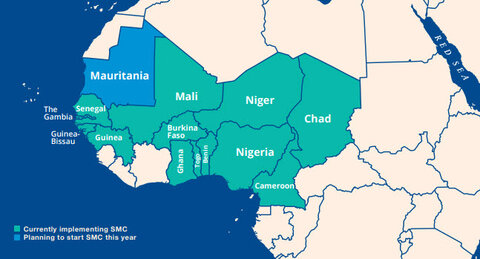Seasonal Malaria Chemoprevention (SMC) eligible areas

SMC is to be implemented in areas where malaria is highly seasonal, and transmission is intense. This period often corresponds with the period of highest rainfall.1 The areas which meet these criteria are mostly in the Sahel region of Africa as well as in certain parts of southern and eastern Africa.
The Sahel region of Africa is a semi-arid climatic and geographic zone between the Sahara to the north and the Sudan Savanna to the south. Areas in the Sahel that are eligible for SMC are particularly vulnerable to devastating seasonal malaria outbreaks, which mainly occur during the rainy season. These areas include the northern parts of Benin, the whole of Burkina Faso and Cameroon, central Chad, Gambia, the northern part of Ghana, Guinea and Guinea Bissau, the whole of Mali, southern Mauritania, Niger, the extreme north of Nigeria, parts of northern Senegal, Sudan and northern Togo.
Following the WHO policy recommendation in 2012, SMC have been implemented in the Sahel with great success. To date, 17 countries (Benin, Burkina Faso, Cameroon, Chad, Gambia, Ghana, Guinea, Guinea Bissau, Mali, Mauritania, Mpzambique, Niger, Nigeria, Senegal, South Sudan, Togo and Uganda) have deployed the interventon, supported by community health workers and volunteers.2